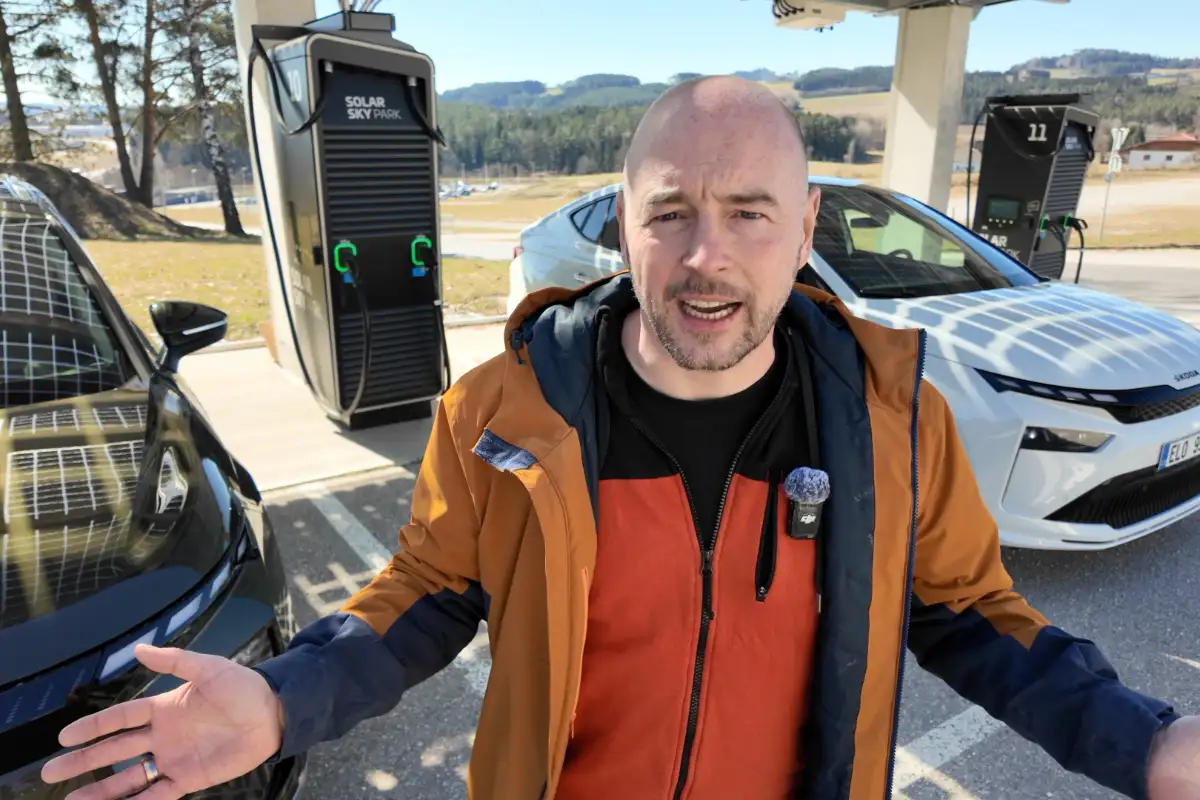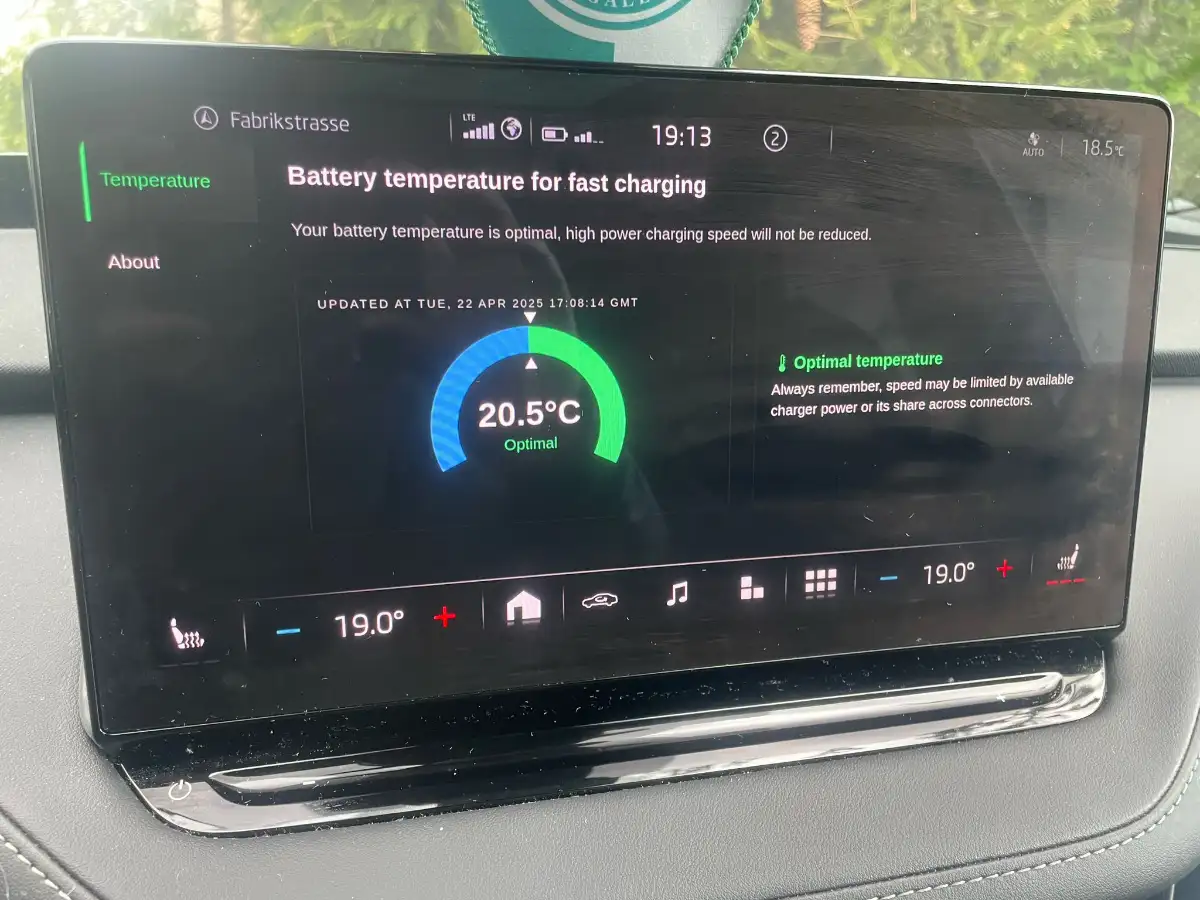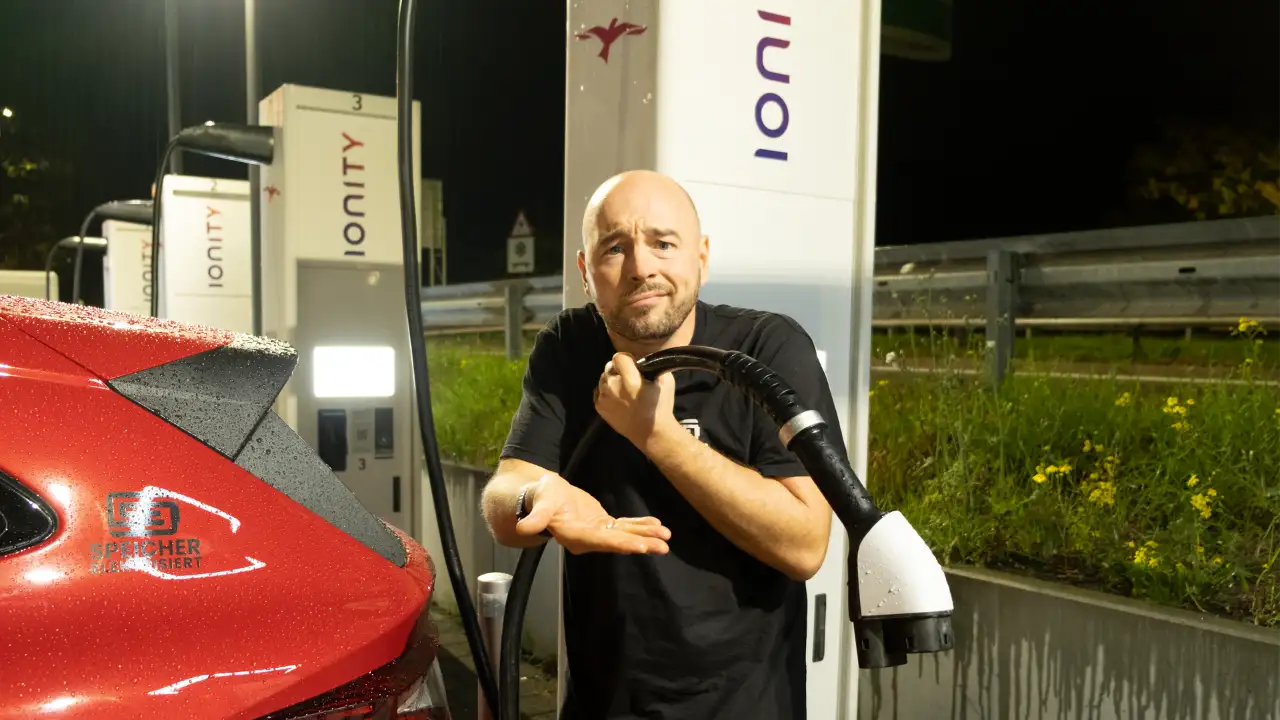Is the higher charging performance of the ENYAQ 85x with 175 kW really worth it?
In my latest hands-on test, that’s exactly what I wanted to find out – under controlled conditions and with a clear question in mind. But what started as a simple comparison turned into a highly insightful analysis with several unexpected outcomes. Here’s what happened – and what it means for your decision-making.
Test Setup: Two Cars, Two Batteries, Same Conditions
For this test, I used two Škoda ENYAQ facelift models:
- ENYAQ Coupé 85 (RWD) with 135 kW max charging power
- ENYAQ SUV 85x (AWD) with 175 kW max charging power
Technically, both use the same 77 kWh battery, but differ in charging power.
We charged both vehicles at the Solar Skypark Freistadt using powerful 300 kW Alpitronic chargers – under optimal conditions (temperature, preconditioning, SoC).
What Was Supposed to Happen…
According to Škoda, the charging time from 10 % to 80 % should be 28 minutes for both versions. The idea: the 175 kW model starts faster, but the 135 kW catches up by the end.
The key question: Does the 175 kW all-wheel drive version offer a real-world benefit – or is it just a theoretical number?
…and What Actually Happened
We brought both vehicles down to exactly 10% SoC and preheated the batteries, confirmed by the in-car display. Despite ideal preparation, two major deviations occurred – and they clearly influenced the results:
1. SoC Drop on the 85x: BMS Calibration?
Immediately after plugging in, the SUV’s state of charge dropped from 10 % to 7 %, without any actual energy loss. This may point to BMS calibration, which isn’t clearly communicated to the user.
Result: The vehicle charged 3 % more than intended – adding unnecessary time.

2. Power Drop from Battery Temperature (85x)
At around 45 % SoC, the 175 kW model experienced a significant drop in charging power.
The reason: the battery temperature exceeded 50 °C, and cooling appeared to kick in too late. Despite the system being capable of more, the charging curve flattened prematurely.
3. Charging Drop Caused by the Station (85)
At ~70 % SoC, the 135 kW ENYAQ suddenly dropped from nearly 100 kW to just 60 kW.
My analysis shows that this was caused by the charging station, not the vehicle. The ENYAQ was still requesting more power, but the station didn’t deliver – likely a local power management issue.

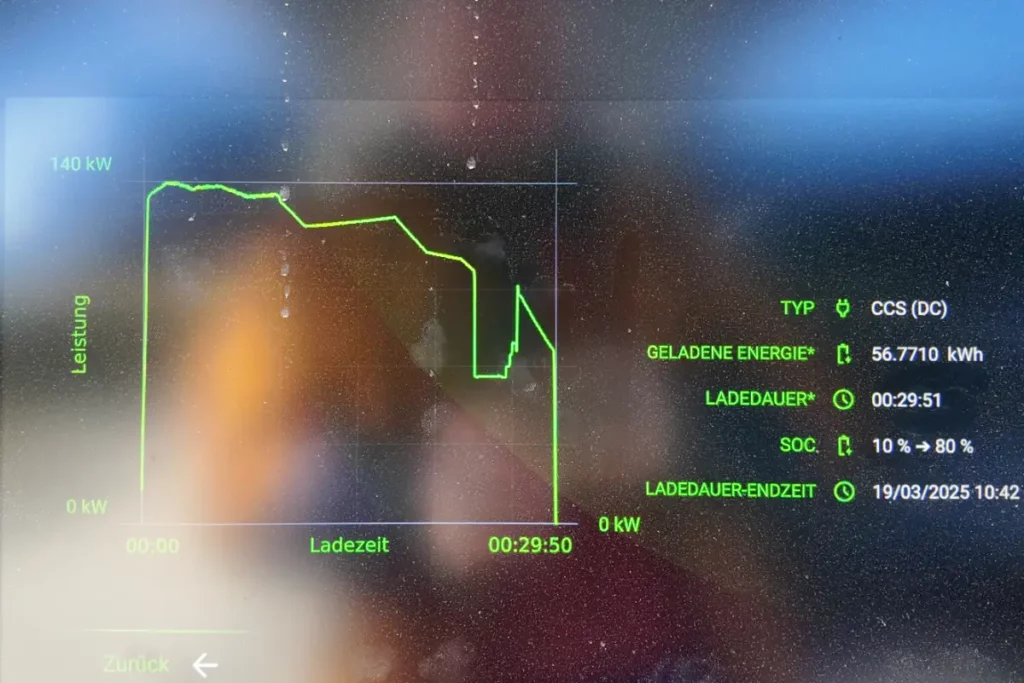
What the Data Tells Us
I analyzed over 20,000 data points – current, SoC progression, charging power, temperature trends. Here’s the bottom line:
- The 135 kW ENYAQ charges more consistently, though it experienced a sudden power drop near the end (station-related). The earlier small oscillations also stemmed from the charger, not the car.
- The 175 kW ENYAQ charges faster – but only until ~65 % SoC. After that, both versions converge in time and SoC progression.
- Across four independent tests, the 175 kW model showed consistent thermal limitations, with charging power dropping sharply around 40–45 % SoC when the battery hit 50 °C.
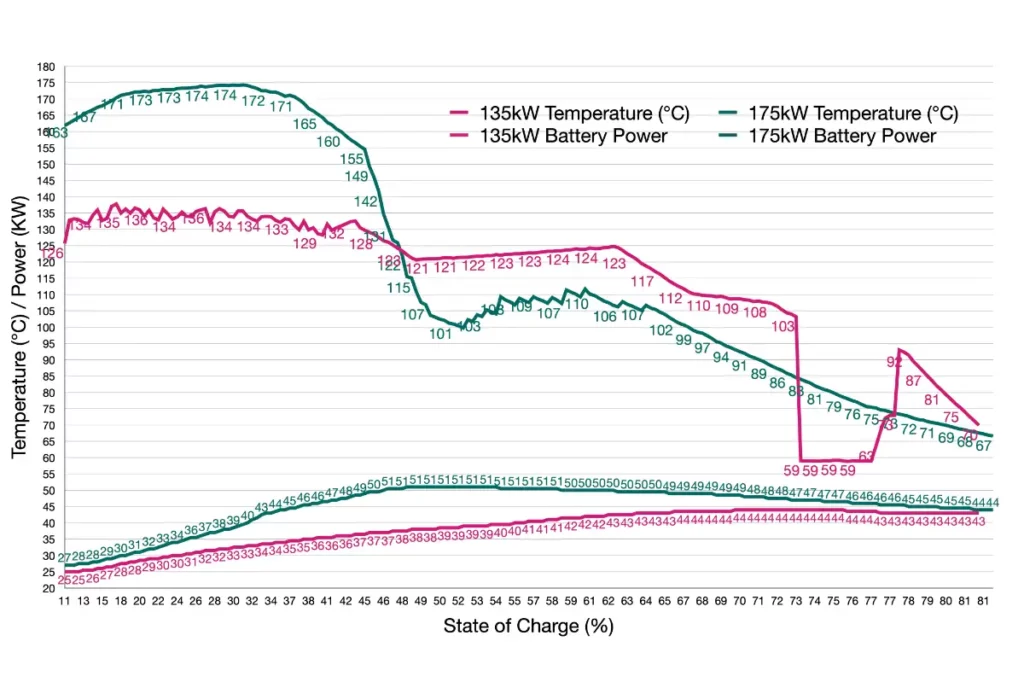
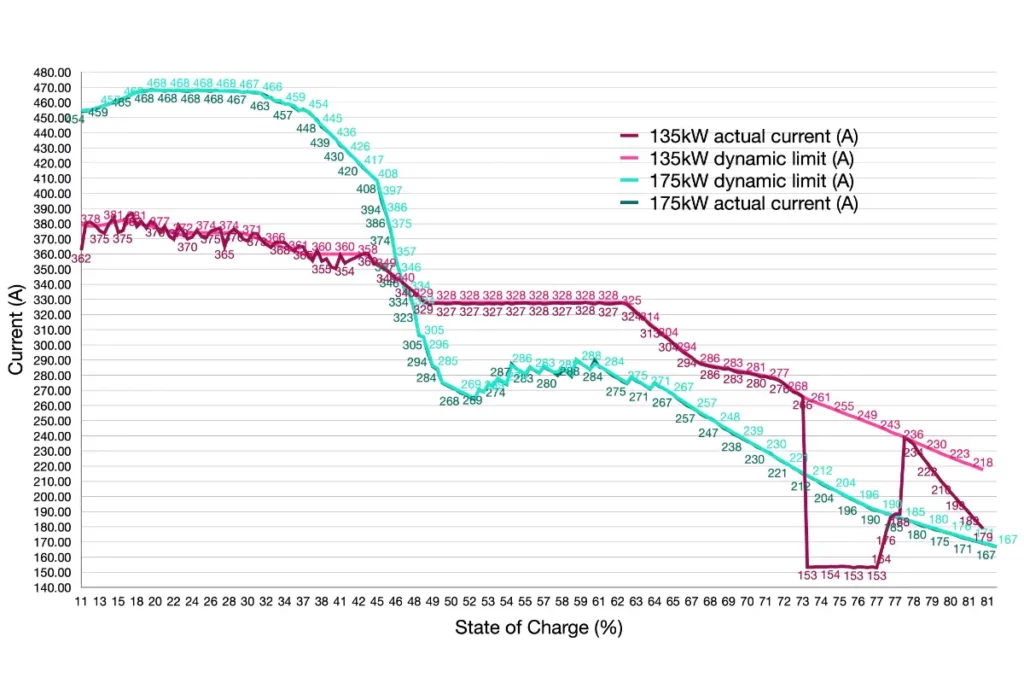
Conclusion: Is 135 kW Enough – or Is 175 kW Worth It?
If you regularly do short top-ups between 10–60 % SoC (e.g. on long road trips with optimized stops), the 175 kW version gives you a small time advantage, maxing out at ~2 minutes at 40 % SoC, and ~1 minute at 60 %.
But:
If you don’t need all-wheel drive, the upgrade just for faster charging isn’t really worth it. You’re better off investing in comfort features, like the Advanced package with Head-up Display.
A Message to Škoda
We, the Škoda EV community, would appreciate more transparency on charging behavior, especially for:
- The SoC drop in new vehicles
- Improved thermal management in the 85x / 175 kW configuration
Because UX means understanding what your car is doing.
As always, full details and all graphs are available in the video

